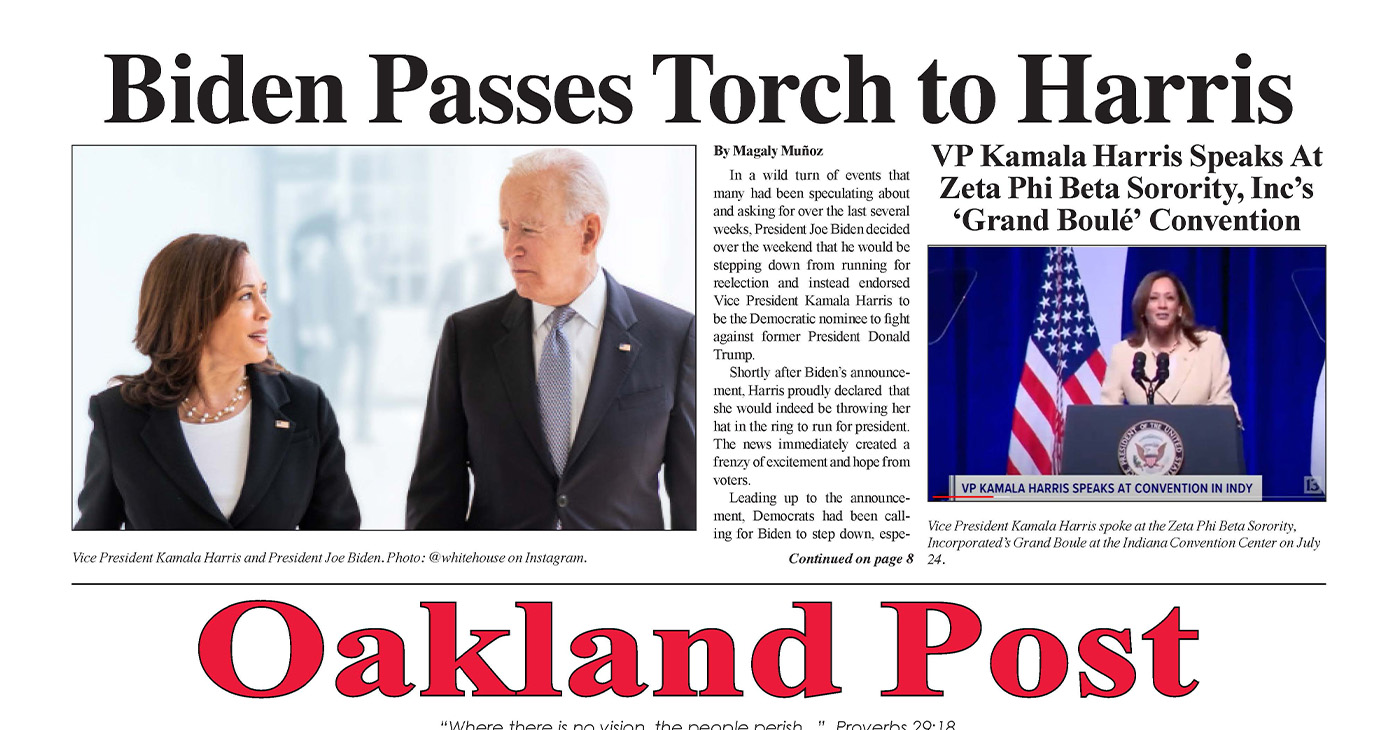Equity
New Berkeley Terner Center Database Gives ‘Road Map’ for Local Housing Reform
Local municipalities around the U.S. now have a road map to pursue housing reform through a first-of-its kind database created by the Terner Center for Housing Innovation at UC Berkeley. It catalogs state incentives and programs that legislators can emulate to produce more local housing. As part of Berkeley’s College of Environmental Design, the Terner Center’s database sorts 144 pro-housing policies from 20 states by factors related to affordability and equity.

By Ivan Natividad
Berkeley News
Local municipalities around the U.S. now have a road map to pursue housing reform through a first-of-its kind database created by the Terner Center for Housing Innovation at UC Berkeley. It catalogs state incentives and programs that legislators can emulate to produce more local housing.
As part of Berkeley’s College of Environmental Design, the Terner Center’s database sorts 144 pro-housing policies from 20 states by factors related to affordability and equity. This can serve as a resource to help policymakers and housing advocates implement effective housing policy in their local contexts, said Shazia Manji, a Terner Center research associate.
“It is clear that state action is needed to overcome local resistance to housing production; what is less clear, however, is the road map to shift policy,” Manji said. “This database and typology are a first effort to catalog what states across the country have done to advance home-building.”
To capture the breadth of state pro-housing laws across the country, Terner Center researchers scanned published research of state laws that were designed to produce more local housing production. A legal search engine was also used to identify laws that may have not been included in academic research studies.
The final report focuses on laws passed by state legislatures, and approved by governors, that impact local planning and zoning decisions.
Manji said the data shows that state legislation typically employs several policies at a time to put the necessary pressure on localities to produce more housing. The development of these state pro-housing tools often occurs through years of work.
“While legislation can, and sometimes does, implement new and novel approaches, the majority of the laws we reviewed made changes to try and improve upon existing laws and requirements,” said Manji. “… This report sets the stage for a much-needed and more comprehensive effort to compile and characterize what states have already done to intervene in local housing policy and practice.”
For the full report, go to https://ternercenter.berkeley.edu/wp-content/uploads/2023/02/State-Land-Use-Report-Final-1.pdf
Activism
Oakland Post: Week of July 24 – 30, 2024
The printed Weekly Edition of the Oakland Post: Week of July 24 – 30, 2024

To enlarge your view of this issue, use the slider, magnifying glass icon or full page icon in the lower right corner of the browser window. ![]()
Activism
Oakland Post: Week of July 17 -23, 2024
The printed Weekly Edition of the Oakland Post: Week of July 17 -23, 2024

To enlarge your view of this issue, use the slider, magnifying glass icon or full page icon in the lower right corner of the browser window. ![]()
California Black Media
Report: Black Californians Lead as Victims of Hate Crime; Prosecutions Climb
California Attorney General Rob Bonta released the 2023 Hate Crime in California Report on June 29, providing data and resources to support ongoing efforts across the state to combat violence motivated by racial or other biases. Overall, reported hate crime events in California decreased by 7.1% from 2,120 in 2022 to 1,970 in 2023. Despite that general downward trend, anti-Black bias incidents in the state remained the most prevalent. Year after year, this disturbing statistic holds true despite a 20.6% decrease from 652 in 2022 to 518 in 2023. The next highest reporting of bias events was 199 Anti-Hispanic or Latino instances.

By Edward Henderson
California Black Media
California Attorney General Rob Bonta released the 2023 Hate Crime in California Report on June 29, providing data and resources to support ongoing efforts across the state to combat violence motivated by racial or other biases.
Overall, reported hate crime events in California decreased by 7.1% from 2,120 in 2022 to 1,970 in 2023.
Despite that general downward trend, anti-Black bias incidents in the state remained the most prevalent. Year after year, this disturbing statistic holds true despite a 20.6% decrease from 652 in 2022 to 518 in 2023. The next highest reporting of bias events was 199 Anti-Hispanic or Latino instances.
“The California Department of Justice has a zero-tolerance policy when it comes to hate, and will continue working with law enforcement, elected leaders, and community organizations across the state to keep our communities safe through education, prevention, and enforcement,” said Attorney General Robert Bonta after releasing the report.
“We won’t let bigots and bad actors win. We will not let hate prevail,” said Bonta.
The report also found that prosecutions inched up by 5% (about 32 percentage points).
According to the Attorney General’s report, from 2022 to 2023, the number of hate crimes referred for prosecution increased from 647 in 2022 to 679 in 2023.
Of the 679 hate crimes that were referred for prosecution, 463 cases were filed by district attorneys and elected city attorneys for prosecution. Of the 463 cases that were filed for prosecution, 322 were filed as hate crimes and 141 were filed as non-bias motivated crimes.
Under California law, a hate crime is a criminal act committed in whole or in part because of a victim’s actual or perceived disability, gender, nationality, race or ethnicity, religion, sexual orientation, or association with someone with one or more of these characteristics.
Aside from the information related to anti-Black hate crimes, other key findings in the 2023 Hate Crime in California Report include:
- Hate crimes fell by 7.1% to 1,970 events.
- Hate crime offenses dropped by 8.9% to 2,359.
- Victims of hate crimes decreased by 6.9% to 2,303.
- Hate crimes due to racial bias went down by 21.6% to 1,017.
- Hate crimes due to religious bias rose by 30% to 394.
- Anti-Islamic bias events increased from 25 to 40.
- Hate crimes due to sexual orientation bias went up by 4.1% to 405.
- Anti-transgender bias events rose by 10.2% to 65.
- Anti-LGBTQ+ bias events surged by 86.4%.
The disproportionate number of hate incidents recorded in the Attorney General’s report lines up with data released by the California Civil Rights Department (CRD).
Responding to a surge in hate crimes and hate incidents, in 2023, Gov. Gavin Newsom’s administration launched the “California vs. Hate” initiative, which includes a hotline and online reporting platform for victims.
“CA vs Hate is about recognizing and protecting the incredible diversity of our state and sending a clear message that hate will never be tolerated,” said Newsom.
If you or someone you know experiences a hate crime or hate incident, here’s how you can report:
CA vs Hate is a non-emergency, multilingual hate crime and incident reporting hotline and online portal. Reports can be made anonymously by calling (833) 866-4283, or 833-8-NO-HATE, Monday to Friday from 9 a.m. to 6 p.m. PT or online at any time.
Hate acts can be reported in 15 different languages through the online portal and in over 200 languages when calling the hotline. For individuals who want to report a hate crime to law enforcement immediately or who are in imminent danger, please call 911.
For more information on CA vs Hate, please visit CAvsHate.org.
-

 Arts and Culture3 weeks ago
Arts and Culture3 weeks agoRooted in Tradition: The Intricate History of Black Hair Braiding
-

 Bay Area4 weeks ago
Bay Area4 weeks ago“I Will Not Be Bullied,” Says Oakland Mayor Sheng Thao
-

 Bay Area2 weeks ago
Bay Area2 weeks agoPG&E Increases Rates While Bay Area Households Are Struggling to Stay Afloat
-

 Business3 weeks ago
Business3 weeks agoGov Newsom: Raising Fast Food Minimum Wage to $20 Pays Off as Jobs Multiply in Industry
-

 Activism4 weeks ago
Activism4 weeks agoOpponents of Mayor Sheng Thao Are Calling on Her to Resign Following FBI Raid
-

 Bay Area2 weeks ago
Bay Area2 weeks agoJuneteenth Mass Shooting Suspect Charge with Multiple Counts of Felony Assault by Alameda County DA Pamela Price
-

 Community1 week ago
Community1 week agoHundreds Come to Jehovah’s Witnesses’ Assembly Hall for Three-Day Program of ‘Good News’ in Fremont
-

 Activism4 weeks ago
Activism4 weeks agoOakland Coliseum Sale to AASEG: A Model for Community Development and Inclusion





















































